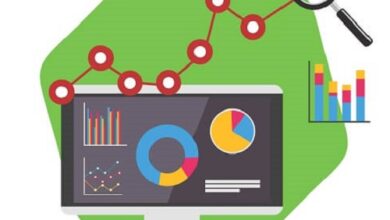How to collect qualitative data/advantages/disadvantages
What is qualitative data? The qualitative data refer to the descriptive data. In statistics, qualitative data is also known as categorical data. So what are the qualitative data collection methods? How to collect qualitative data?
Qualitative data is important in determining the particular frequency of traits or characteristics. They allow the researcher to create parameters by which larger data sets can be observed. Qualitative data provide the means by which observers can quantify the world around them.
For a market researcher, collecting qualitative data helps answer questions like who your customers are, what issues or problems you are facing, and where you need to focus your attention to solve problems.
Qualitative data deals with people’s emotions and perceptions, what they feel. These perceptions and emotions are documented in qualitative data. They help the market researcher to understand the language spoken by their consumers. This, in turn, helps researchers to identify and address the problem effectively and efficiently.
Qualitative data vs. Quantitative data
It is very easy to understand the difference between qualitative and quantitative data . Qualitative data does not include numbers in its definition of traits, while quantitative data is about numbers.
To better understand the concept of quantitative data and qualitative data, it is best to look at examples of particular data sets and how they can be defined. The following are examples of qualitative data and quantitative data: How to collect qualitative data?
- The cake is pink, blue and white (qualitative).
- Women have brown, black, blonde and red hair (qualitative).
- There are 4 cakes and three muffins in the basket (quantitative).
- 1 glass of soda has 97.5 calories (quantitative).
Qualitative data collection methods
Qualitative data collection is exploratory in nature, involves in-depth analysis and research. Qualitative data collection methods are mainly focused on obtaining ideas, reasoning and motivations, so they go deeper in terms of research.
Because qualitative data cannot be measured, data collection methods that are structured in a limited way are preferred.
These are the qualitative data collection methods:
- Individual interviews: One of the most widely used data collection instruments for qualitative research, mainly due to its personal approach. The interviewer or researcher collects data directly from the interviewee individually.The interview can be informal and unstructured, that is, conversational. The questions that are asked are mostly open-ended and spontaneous questions, and the interviewer allows the flow of the interview to dictate the following questions. How to collect qualitative data?
- Focus groups: This takes place in a group discussion environment. The group is limited to 6-10 people and a moderator is assigned to lead the ongoing discussion. Depending on the data selected, the members of a group may have something in common.For example, a researcher conducting a study on runners will choose athletes who are or were runners and who have sufficient knowledge of the subject. I share 5 Steps to make a focus group .
- Record keeping: Another method of data collection is records, which makes use of existing reliable documents and similar sources of information such as data sources. This information can be used in new research. This is similar to going to a library. There you can review books and other reference materials to gather relevant data that can be used in your research.
- Observation process: In this qualitative data collection method, the researcher is introduced to the environment in which his respondents are found, closely observes the participants and takes notes. This is known as the observation process. In addition to taking notes, other data collection methods such as audio and video recording, photographs, and other similar methods can be used.
- Longitudinal studies: This method of data collection is carried out repeatedly on the same data source over an extended period of time. It is an observational research method that lasts a few years and in some cases can continue for decades. How to collect qualitative data?The goal of this data collection method is to find correlations through an empirical study of subjects with common traits. Learn here all about surveys and longitudinal studies for your next research.
- Case Studies: In this method, data is collected through in-depth case study analysis. The versatility of this method is demonstrated in how it can be used to analyze both simple and complex topics. The strength of this method is the way it uses a combination of one or more qualitative data collection methods to draw inferences.
Advantages
- Help in deep analysis: The qualitative data collected provides researchers with an in-depth analysis of the topics covered. When collecting qualitative data, researchers tend to poll participants and can gather a great deal of information by asking the right questions. From a series of questions and answers, the collected data is used to draw conclusions.I share some tips for analyzing data from qualitative research . How to collect qualitative data?
- Understand what customers think: Qualitative data helps market researchers understand their customers. Using qualitative data gives companies insight into why a customer bought a product. Understanding the customer‘s language helps market research infer the collected data in a more systematic way.
- Comprehensive data: The collected data can also be used for future research. Because the questions to collect qualitative data are open-ended, respondents are free to express their opinions, allowing more information to be collected.
Disadvantages
- Time-consuming: Since qualitative data collection takes more time, fewer people are included in the study compared to quantitative market research , unless time and budget allow.
- They are not easy to generalize: Because fewer people are studied, it is difficult to generalize the results for that population.
- It depends on the researcher’s skills: This type of data is collected through individual interviews, observations, focus groups, etc., therefore it depends on the researcher’s skills and experience to collect information from the sample. How to collect qualitative data?


